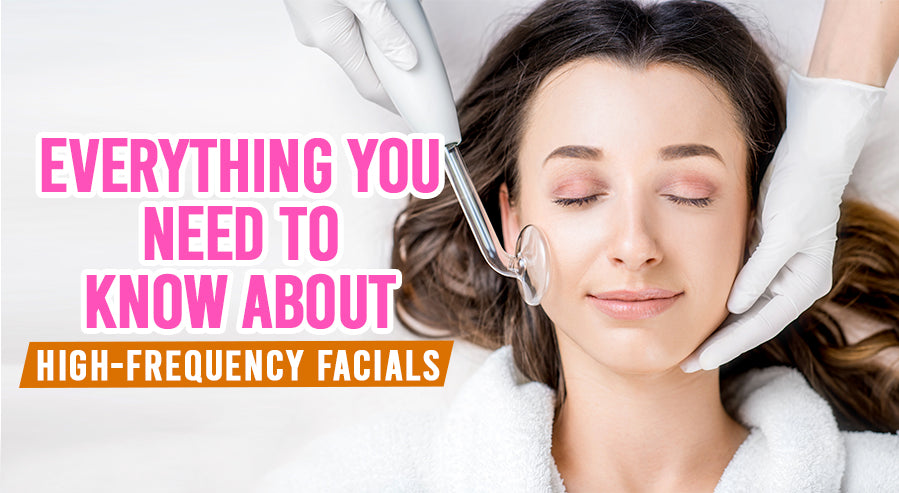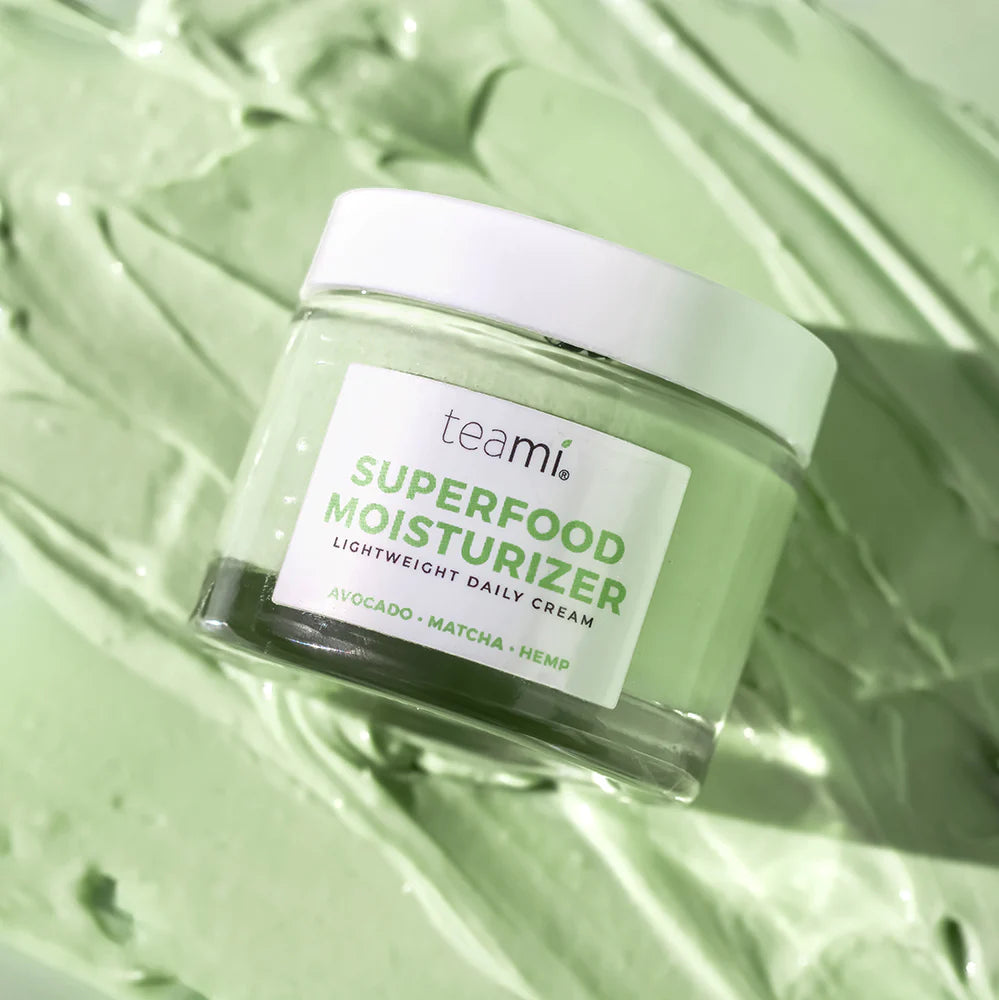Everything You Need to Know About High-Frequency Facials

Skincare can be tricky, especially since the list of products designed for it is constantly growing. Everything from creams and lotions to medical injections is available for those who want to enhance the quality and aesthetic of their complexion. Several potential threats to our complexion and skin health have turned the skincare industry into a booming business.
Many people develop routines suited to their personal situations since everyone's skin is different and can be more sensitive to certain compounds. When our skin begins to suffer because of aging or environmental factors, it can be difficult to maintain pride in our complexion. This sentiment is part of what has allowed the skincare industry to grow to such heights.
While traditional skincare resources remain popular tools for the average person, there are other options you might not be familiar with. One of the lesser-known avenues for skincare is called a high-frequency facial, which might not be the clearest concept at first glance. Facials are common in the skincare industry, typically taking advantage of similar products to those used in typical skincare routines.
The problem is that high-frequency facials are significantly different and involve tools you might not know exist. Understanding what a high-frequency facial is and how it affects our skincare routine is essential to take full advantage of what it can offer.
What is a High-Frequency Facial?
High-frequency facials are actually very popular, but that does not mean everyone knows what they are or what they entail. The origins of high-frequency facials date back to the 1800s, though the treatment was not created back then. Rather, the concept of high frequency was initially discovered by the famous scientist Nikola Tesla. Despite dying penniless and ultimately unsuccessful, Tesla contributed several breakthroughs to the scientific community, including discovering the Tesla high-frequency current (Tesla Current).
The Tesla Current has a rate of vibration between 60,000 and 200,000 hertz, which is a fairly powerful frequency range. The Tesla Current has several practical applications, and its appearance in the age before antibiotics led to its use in medicine. The Tesla Current was originally used to treat infections like strep throat, but modern practices have turned the Tesla Current into a more adaptive resource. One of the more recent additions to the Tesla Current's list of applications was the creation of high-frequency facials.
While Tesla likely never envisioned that his discovery would be used for cosmetic purposes, it has since become a leading skincare treatment. Tesla discovered the frequency in the late 1800s, but a French biophysicist named Jacques-Arsène d'Arsonval was the first to apply it to skincare. He introduced the Tesla Current to skincare in 1892, which had the unfortunate consequence of continuing the trend of Tesla's accomplishments being coopted by others (the Tesla Current is often referred to as the d'Arsonval Current).

By the 1970s, European salons began using d'Arsonval's technique, and in the 1980s, it reached North America. However, there remains a question of why these facials are used and what they are. High-frequency facials are skincare massages that use the Tesla Current to send vibrations through the skin on your face. Allegedly, high-frequency facials are used to treat various cosmetic issues that affect our appearance and confidence to varying degrees.
High-frequency facials treat acne, wrinkles, enlarged pores, and other skin issues affecting modern society. While the theory that Tesla's discovery can help us maintain our ideal complexion sounds amazing, some details must be addressed.
How Are High-Frequency Facials Performed?
Knowing what a high-frequency facial is and how they work are 2 different things that are equally important to anyone interested in them. The machines used to generate the current all have glass electrodes that can be applied to the contours of our face and body. They tend to bear a striking resemblance to the tools used by dentists, such as water picks, but lack sharp ends and instead have flat, glass surfaces.
Once the device is powered, the tips of the electrodes are applied to the skin on the face, and a mild electrical charge is sent through the skin. This is possible because the tips of the wands are filled with either neon or argon gas, which allows the electricity to travel from the wand, through the glass, and to your skin with minimal resistance.
When active, the devices emit a subtle glow and produce a faint buzzing noise, but the important part is the glow. The color of the glow changes depending on the gas used in the tip, and the light color contributes to its effect on your skin.
A high-frequency wand will either emit a neon red light or a violet one, which alters the overall effect since they both give off different wavelengths. The color of light is more than just a visual factor; the different colors give off different ranges of ultraviolet waves that interact with biological organisms differently. Insofar as facials are concerned, acne-prone skin is treated with violet light, whereas aging skin is treated with red light.

According to providers, the electrical charges and light produce enriched oxygen molecules beneath your skin, generating an anti-bacterial effect while warming the tissue. Theoretically, this pushes toxins away and helps your cells access essential nutrients that help keep your skin healthy. They also allege that the process promotes collagen and elastin levels in the body, which are essential to keeping the skin smooth and intact.
While these benefits would actually help you keep your complexion youthful and healthy, there is a surprising lack of research surrounding cosmetic applications. That said, there was a study from 2021 titled Efficacy and Safety of High-Intensity, High-Frequency, Parallel Ultrasound Beams for Fine Lines and Wrinkles that uncovered genuine benefits. The study included 58 subjects, most of whom were women around 58 years old. The subjects were divided into test and control groups, with the former being subjected to high-frequency facial treatments to assess the impact on their skin.
The study used a novel ultrasound device that produced high-intensity ultrasound beams but likely did not employ the Tesla Current. Regardless, the subjects in the test group experienced a significant improvement in their complexion. The treatment reduced the appearance of fine lines and wrinkles on their skin, restoring a degree of youth to their visages.
Are There Risks?
High-frequency facials may offer genuine benefits for our complexion, at least concerning aging. Unfortunately, there do not seem to be studies corroborating every claim made by the providers. (Though electrotherapy does cause certain skincare benefits when applied properly.) Nevertheless, high-frequency facials share a common factor with several skincare procedures: risks.
Very few procedures and treatments are risk-free, though the risks associated with certain treatments are fairly minor compared to others. Unfortunately, high-frequency facials do not fall under the "risk-free" umbrella since the process involves electric charges and vibrations. Fortunately, it does seem to fall under the category of "treatments with minor risks."
The biggest threat with treatments like this is overexposure since allowing your body to vibrate too much or experience constant electrical charges will ultimately be bad for you. The good news is that overexposure to high-frequency facial wands does not seem to carry major risks.

The main risk associated with the treatment is mild pain afterward, likely because vibrations and electricity cause the muscles in your face to spasm and contract. Otherwise, the only other confirmed side effects are dark spots, redness, and swelling. That said, overexposure can, in extreme cases, lead to minor burns from the electricity or rapid vibrations.
Fortunately, the burns are not the type that causes permanent disfigurement or require constant care. There was a rumor at one point that the treatment could cause cancer or similar long-term health problems. This was disproven by the American Cancer Society, which conducted extensive research and found no conclusive evidence to indicate major health risks.
With that in mind, there are still many unknowns about this treatment's long-term repercussions. Therefore, discretion is advised if you intend to undergo a high-frequency facial as a skincare treatment. There are supposedly additional studies being planned to map out the potential long-term consequences, but until those are resolved, you should not overindulge in this treatment to minimize the risk of any consequences the studies might uncover. Otherwise, the treatment is officially labeled "safe" by American health standards.
Despite that, you might be wondering about potential alternatives that carry less risk and address all the issues that high-frequency facials allegedly resolve.
Potential Alternatives
Undergoing high-frequency facials to improve your complexion might not be overly appealing, considering the treatment's uncertainty. Unfortunately, this does little to help you with any potential skincare troubles. The good news is that there are alternatives that are less risky and do not necessitate the use of pharmaceutical compounds.
We have learned to harness several natural compounds to enhance our skin's health and appearance. Most of these compounds offer similar or improved benefits to those allegedly offered by high-frequency facials. One of our biggest resources is something we are already supposed to have in our bodies: vitamin C.
Vitamin C is one of the essential vitamins we need during our development, but it also happens to be one we cannot produce naturally. Some vitamins are so important to our bodies that our biology adapted to ensure we can produce them on our own rather than having to consume them. Unfortunately, vitamin C is not on that list, and we are expected to include it in our diets.
Frustratingly enough, we are one of the few animals that cannot produce it ourselves, which puts us at a slight disadvantage within the animal kingdom's hierarchy. Fortunately, getting our daily dose of vitamin C is extremely easy since it is readily available in several foods and can even be obtained via supplements. While vitamin C is primarily cited as a tool for a healthy body, it also has an impact on our skin, which has turned it into a valuable skincare tool.

Vitamin C is capable of several major skincare benefits, but the most important is its role in manufacturing a crucial protein. We mentioned that high-frequency facials allegedly promote collagen production. This is important because collagen resolves most skincare issues (aging, elasticity, hydration) by itself. This is because collagen is the protein our bodies use to make our skin to begin with.
While the efficacy of high-frequency facials for promoting collagen production is not fully proven, vitamin C is well-known for collagen production. Vitamin C is the key ingredient our bodies use to synthesize collagen, meaning we would not have any collagen without ample vitamin C.
Adding vitamin C to your skincare routine can enhance your collagen production and automatically resolve skincare issues like wrinkles and poor hydration. The best part is that vitamin C carries fewer risks as long as you do not overdose (which is rare and only occurs if you take too much in one day). The trick is finding a vitamin C supplement with skincare in mind.
Finding the Right Blend
Skincare is a complicated practice that has become almost essential to modern society because we care about our appearance. Unfortunately, that level of care has caused us to take risks we should not for the sake of our looks.
While the risks of high-frequency facials are ultimately minimal, it is usually better to try a less strenuous option first. Fortunately, resources like vitamin C make it possible to fortify our skin and improve our complexion naturally. The trick is finding the right product from the right vendor.

We at Teami fully embrace the idea that natural substances can do more for our complexion than most pharmaceutical alternatives. That is why our catalog consists of products made from natural ingredients that are designed to enhance our appearance and health. Among our products is our Hibiscus Infused Vitamin C Serum, designed to provide your daily dose of vitamin C specifically to enhance your skin. We encourage you to visit our website and try our product directly. After all, finding the right blend is a Teami effort.
Subscribe to our Newsletter
Subscribe to our newsletter and get 10% off your first purchase
 Instagram
Instagram



